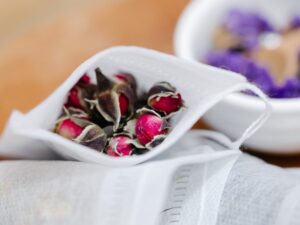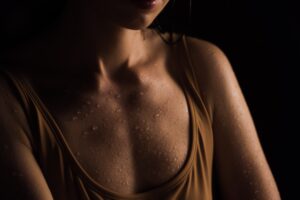Summary: Understanding this procedure can be complicated, as there are different types of threads for different methods and goals. I am going to break down different types of thread lifts and those thread types in this article.
Table of Contents
ToggleWhat Are Thread Lifts?
The thread lift is a skin tightening technique used in surgery for closing wounds for many decades but has just begun to gain recognition in the cosmetic industry for lifting skin loose skin resulting from aging or weight fluctuation. It uses threads (sutures) made from materials used in surgery to close wounds. In this procedure using fine surgical needles, threads are placed under the skin to tighten and lift loose or sagging areas in various parts of the face and body to help rejuvenate the face. While sutures provide physical support to the loose skin by pulling up the loose skin, they also stimulate the production of collagen that has slowed down due to aging.
Characteristics for Threads Used in Thread lifts
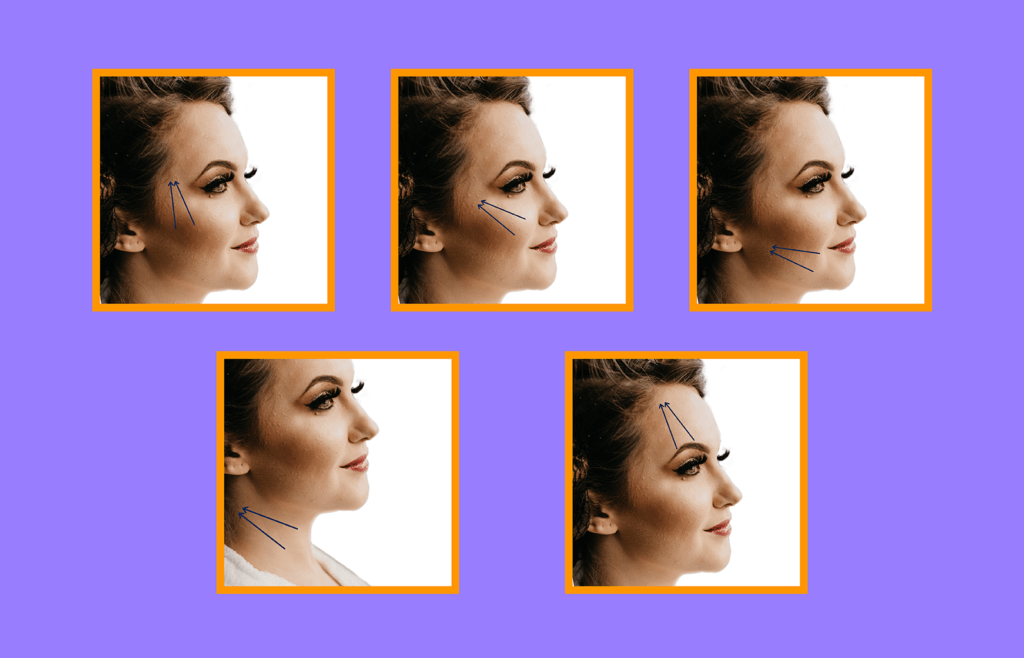
These threads are distinguished based on 3 characteristics: Absorption, length,, and surface texture.
Absorption
An absorbable thread will break down over time be absorbed into the body. Different absorbable threads will last for around six months to up to 24 months before they are dissolved and absorbed by the body.
- Polydioxanone (PDO) thread dissolves around 6 months after the treatment.
- Poly L Lactic Acid (PLLA) thread lasts around 12 months.
- Polycaprolactone (PCL) threads are absorbed 24 months after treatment.
As absorbable threads are eventually dissolved they lose effectiveness, but non-absorbable threads permanently lifts your face. Non-absorbable threads (like Aptos, Woffles thread,, and Contour) are made with polypropylene, which is a type of material that the body can’t breakdown or absorb.
Texture
To get effective results, the texture of threads, both absorbable and non-absorbable, is significant. Some textures might work better than others, depending on the treatment area, and sometimes even a combination of threads can be used.
Non-barbed threads: They are smooth and are used in regions with thin tissue such as around the eyes where you don’t want the skin to scrunch up on the surface. These threads are of two types: monofilament plain and monofilament spiral. Both types are
Uni-directional barbed threads: The threads can be barbed in one direction only,
Bi-directional threads: These are barbed in two directions and favored by doctors due to the thread being locked into the tissue in both directions, anchoring the thread and giving stability.
These barbs anchor the thread into the soft tissue under the skin so it doesn’t move, and as they cut in tiny abrasions in the tissues, they trigger the production of collagen in skin tissues to repair itself. Collagen plays an important role in increasing cellular turnover and facial rejuvenation.
Mesh-like net of Threads
Uni-directional and non-barbed threads can be added to create a structure or a mesh-like net These two threads can be moved to make adjustments and corrections after the procedure, but eventually your doctor must anchor them in the tissue.
Using the above basic textures, more and more textures are emerging with growing research in the field. To create a different structure and effect, these threads can be braided before being inserted into the skin. All these unique techniques are usually tailored by the clinic you receive treatment at.
Length
The threads can either be long or short in length. Small stitches like nose lift require smaller threads. Barbed threads tend to be longer and can be used across the face, neck, chest,, and even parts of the body.
Different Types of Threads Used
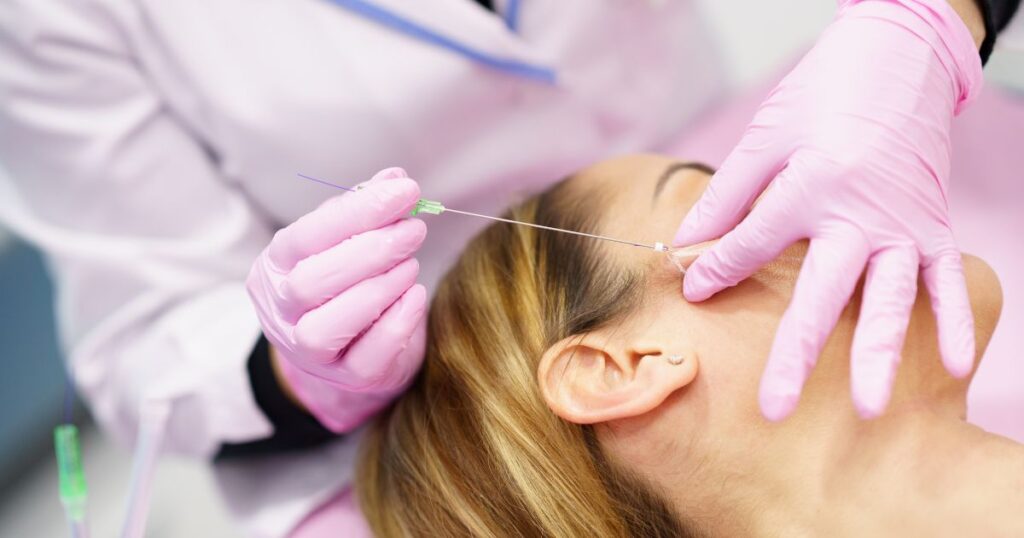
Three main types of threads are populalrly used for thread lifts; polydioxanone (PDO), polylactic acid (PLA),, and polycaprolactone (PCA).
PDO threads
PDO threads has been around the longest and were traditionally used for surgical stitches. These threads are made of a synthetic biodegradable polymer and are absorbed into the body over 6 months. They stimulate fibroblasts for increased production of collagen in a targeted area. They have been proven to be extremely safe
Currently there are three types of PDO threads mainly used; mono, cog,, and screw threads.
- Mono threads – smooth without barbs, mainly tighten the skin and provide a small amount of lift. They and are usually used in combination with other thread types or they are anchored to a point on the face or the scalp.
- Cog threads – have barbs that hook onto the skin to provide support and lift the sagging tissue. Mainly uni-directional barbed thread while Cog 360 has a similar structure to bi-directional barbed thread.
- Screw threads – one or two intertwined barbed threads around the needle to provide good volume restoration for sunken areas of the skin. They helps to restore volume and improves the skin texture and elasticity by stimulating the production of collagen around the threads and their barbs resulting in a natural aesthetics outcome.
Blue Dia thread is formed using a mold shaped to have cogs and the liquid version of PDO is poured into the mold and once it sets in, while PDO thread being cut to form the cogs to make the Cog 365. As the effects these type of threads last around 2 years while other PDO threads last around 1 year, they are very popular in Korea . They are also stronger than other PDO threads.
PDO and all its thread types usually are short in length and are the material used in cosmetic procedures like HIKO nose thread lifting.
PLA threads
PLA threads were developed from a biocompatible polymer derived from lactic acid that has been previously used in many applications such as orthopedic pins and sutures. PLA threads increase the volume of saggy areas and therefore, help to restore shape to the facial area as well as providing a lift by using cones to hook to the tissue. PLA threads are resorbable and In comparison to PDO threads regenerate collagen over a longer time.
PCA threads
PCA threads are the latest bio-absorbable threads that are monofilament suspension threads of synthetic origin (caprolactone). The process of thread breakdown produces molecules of small molecular weight which triggers the production of collagen and Hyaluronic acid by the skin. They induce collagen production for a longer time period than both PDO and PLA threads. As they trigger the fibrotic reaction, even after reabsorption they leave behind a collagen structure that provides support for the skin.
This tightens the skin and the lifting and stretching action will continue and prevents it from sagging. They give a long-lasting result with more moisturized, revitalized, and firm skin.
Different Types of Thread Lifts
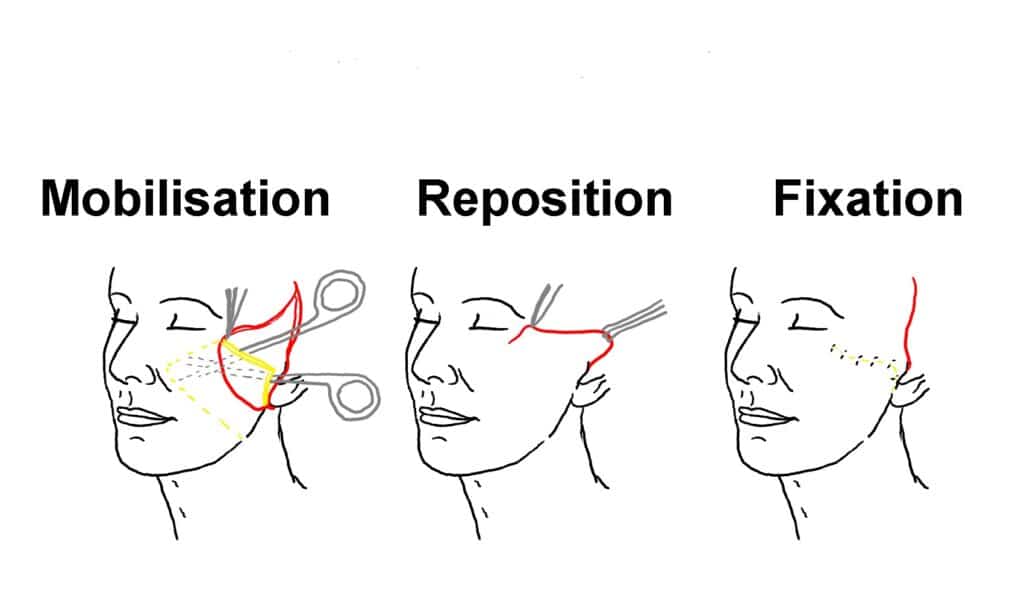
The two most popular types of thread lifts are PDO thread lifts (more popular in Asia) and Silhouette Soft Thread Lifts (in the western part of the world).
Nova Thread Lift aka Korean Thread lift
Tis type of thread lifting is usually done particularly in Korea with absorbable threads PDO . Nova Thread is a brand of sutures that are popularly used in Asia for PDO face lift. Depending upon the desird outcome barbed or a combination of different PDO threads can be used. If performed by a certified expert the procedure is generally safe. Most young asians desired a contoured nose lift thus smaller PDO is a preferred option. As PDO has a shorter life, bi-annual appointments are recommended with clinician who performed the procedure.
Silhouette Soft Thread Lift
Popular in Europe and the US, Silhouette Soft uses PLLA, another type of absorbable thread that contains small bidirectional cones that hold on to the skin tissue and stop the thread from shifting. The cones also stimulate collagen production in the skin and are used for lifting skin that has deep wrinkles and sagging. Clinicians often use a combination of the threads and added ingredients such as vitamins that boost skin healthand can help with the collagen regeneration process. Sometimes these threads are also supplemented with fillers to get the desired result.
What to expect after thread lift?
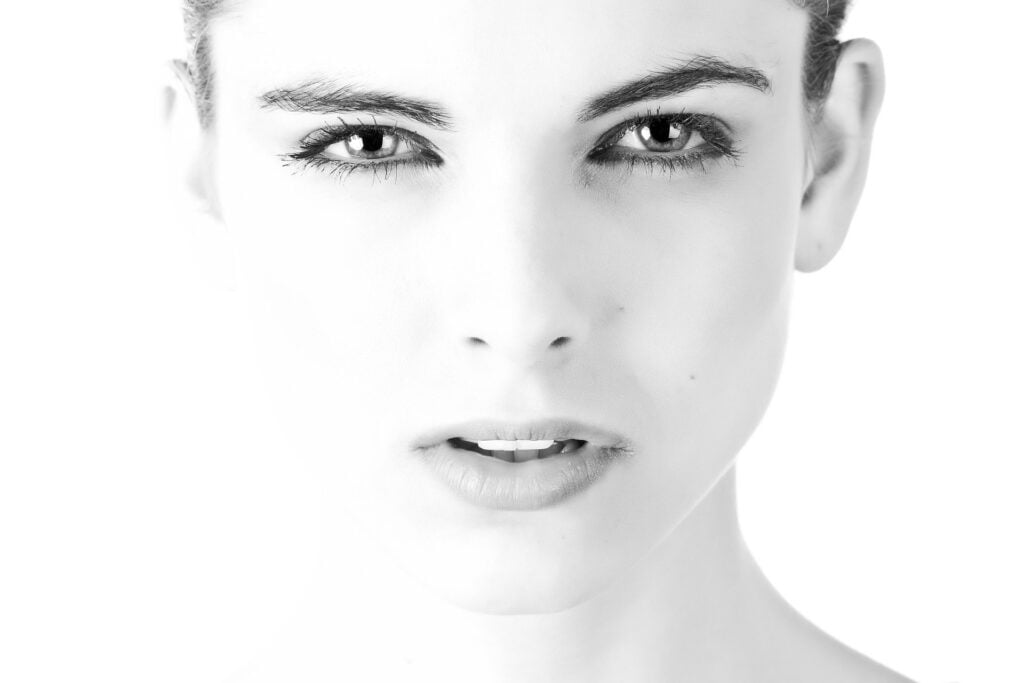
Results – Effects should be visible immediately after the threads are put into place, but you can expect more in the days and weeks right after the procedure is done, as swelling and bruising starts to subside. Results from a thread lift aren’t meant to be permanent but depending upon the type of thread lift you opted for typically last from 1 to 3 years .
Recovery Time – Generally, after a successful thread lift there is quite minimal recovery time but there may be some visible swelling or bruising that will subside in days to come. You can even go back to work right away if you’d like. After a thread lift you might be advised to skip your regular moisturizer for the first few weeks. To avoid any infection you will be prescribed a course of antibiotics. For the first week or so after the procedure you should avoid saunas and high-intensity workouts.
Doctor will recommend you to avoid putting pressure or rolling over onto the newly placed sutures during your sleep, so it is best to sleep with your head propped up for three weeks.
Benefits of Different Types of Thread Lifts
Individual preference, the location of the procedure, and desired length of effect will dictate the threads used for treatment. Because the threads stimulate collagen production, choosing a thread with a longer life can be beneficial. It is important to note that, short-term threads serve slightly different functions than long-term threads.
- PDO thread lifting affective for 6 months is used for lifting loose skin or contouring facial structures such as the nose.
- PLLA that lasts for 12 months gives the face a bit more volume to sunken facial features for example, a person with hollow cheeks is a suitable candidate for PLLA .
Depending upon your goals you can discuss with your clinician and chose the right thread lift procedure for you.
Ultherapy vs Thermage and Laser Skin Tightening
What is meant by thread lifts?
Thread lift is a unique skin tightening technique. For decades it was used in surgery for closing wounds. It makes its recognition in the cosmetic industry for lifting loose skins and reducing aging symptoms.
What is the exact procedure of thread lifts?
The procedure of thread lifts is performed by using fine surgical needles. In this process, threads are placed beneath the skin ( which you want to tighten) and lift loose or sagging areas in various parts of the face and body to help rejuvenate the face. While stitches provide physical aid to the wobbly skin by pulling up the loose skin, they also arouse the production of collagen that has slowed down due to aging.
How many types of threads are used in thread lifts?
Typically three main types of threads are commonly used for thread lifts; polydioxanone (PDO), polylactic acid (PLA), and polycaprolactone (PCA).
What are the subtypes of PDO threads and where these are used?
PDO threads are further classified into the following three subtypes. Each one is utilized for the specific purpose
Mono threads – smooth without spikes, It is mainly used to tighten the skin and provide a small amount of lift. Usually, they are used in combination with other thread types or they are anchored to a point on the face or the scalp.
Cog threads – It has spikes that pin onto the skin to provide support and lift the sagging tissue. Mainly unidirectional barbed thread while Cog 360 has a similar structure to bi-directional barbed thread.
Screw threads –It has one or two intertwined spiked threads around the needle to provide good volume restoration for sunken areas of the skin. It helps to restore volume and improves the skin texture and elasticity by stimulating the generation of collagen around the threads and their barbs resulting in a natural aesthetic outcome.
What are the common types of thread lifts?
The two most common types of thread lifts are PDO thread lifts (more popular in Asia) and Silhouette Soft Thread Lift (in the western part of the world).
What results are expected after thread lift?
After going through thread lifts, you will observe the results as soon as threads are put into place. But it is also common to observe the results after a few days or weeks when bruising and swelling start to subside. Thread lifts do not provide permanent results. However, depending upon the thread type, its result may last for 1 to 3 years.
What is the minimal recovery time after going through thread lift?
A successful thread lift requires minimal recovery time. However, there is some visible swelling and bruising that need a few days to diminish completely. If you would like to go back to your work then even you can go and carry on the regular work routine.
What is a Korean thread lift?
Nova thread lift is also known as Korean Thread lift. this type of thread lift is particularly performed with absorbable threads PDO in Korea. Nova Thread is a trademark of stitches that are popularly used in Asia for PDO facelifts. It is generally safe when performed by certified experts.



